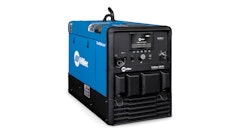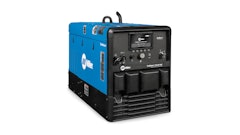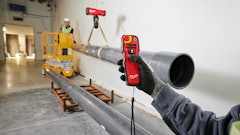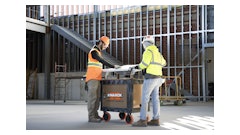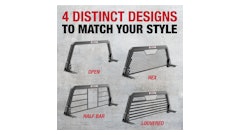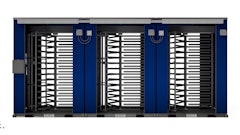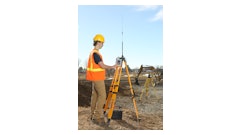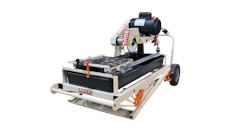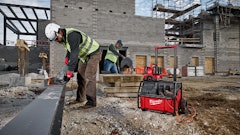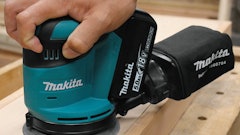Compressors and generators supply much of the power on today's jobsites, so manufacturers' efforts to design and build environmentally friendly power sources go a long way toward ensuring cleaner and "greener" jobsites.
"Manufacturers are putting a great deal of effort into making equipment more environmentally friendly - and with compressors, that focus is primarily on noise reduction and fuel efficiency," says Chance Chartters, direct accounts manager, Mobilair, Kaeser Compressors.
As most are aware, EPA regulations for diesel engines have gotten much stricter over the past decade and are due to get tighter still in 2008 as Tier III/ Interim Tier IV regulations go into effect. According to Todd Howe, product marketing manager for generators at Doosan Infracore Portable Power (producer of the Ingersoll Rand brand), this presents a formidable challenge to manufacturers who aim to build energy efficient, quiet and compact compressors and generators.
For example, new EPA-compliant engines are not usually "drop-in" replacements for their predecessors, Howe points out. Often, the new engines mount differently and require different plumbing and wiring. As a result, the entire product can require a redesign to incorporate the new engine.
Added complexity
With each EPA Tier change, the engines run hotter, so the cooling systems get bigger, the machines themselves get louder and so on.
Balancing all the various design objectives keeps engineers very busy, says Howe. What's more, the electronic controls in the new engines have increased in complexity, making it more difficult to interface with the machine's electronic controls.
Marc James, product marketing manager for compressors at Doosan Infracore Portable Power, says the complexity of engine controls is a challenge, but it comes with some positive side effects. Since engines have become more electronic, it allows manufacturers to develop the potential for better diagnostic and troubleshooting features.
Unfortunately, cleaner-burning engines are not necessarily more fuel efficient. In fact, OEMs say that between Tier I and Tier II, fuel efficiency actually went down rather significantly. Engine designers have worked hard to maintain fuel efficiency while reducing emissions, but haven't been able to improve it.
"For manufacturers, cleaner-burning engines have reduced NOx and particulates, but they run hotter and use more fuel," says Marc Leupi, product manager, utility equipment, Wacker Neuson Corp. "Then the challenge becomes how to quiet the unit but keep enough cooling air, because now we have to cool a hotter running engine in the same tight enclosure. The effect is it increases the manufacturing cost. There's a lot more complexity to the equipment, but it's the same product."
Containing noise and fluids
The way compressor and generator enclosures are designed and built has a major affect on the machines' environmental friendliness.
"Noise is the most important customer attribute with regard to generators," says Howe. "We keep the noise level down with design techniques that improve air flow through the packages without increasing the noise."
Both compressors and generators are generally kept quiet with the use of additional foam insulation and thicker sheet metal, but there is always room for improvement.
"Noise pollution can be significantly reduced by offering a fully enclosed package with a solid floor," says Chartters. "Our [compressor] enclosure includes not only a solid-steel floor, but 2.5 in. of sound-dampening foam for maximum sound attenuation."
He continues, "Having precision-machined airends also contributes to lower noise levels. Tighter tolerances and heavy-duty bearings designed for longevity provide smooth operation and lower vibrations in any compressor."
While noise levels on compressors and generators are not legislated at this time, quieter units do have a competitive advantage, Leupi states. "The quieter, the better," he says.
"Especially in high-growth areas, we're seeing tighter quarters in construction zones," Chartters agrees. "Developers and builders seeking to be good neighbors will want to minimize noise for the health and safety of their workers on site and for citizens in close proximity."
Another structural issue that isn't legislated yet in the U.S., but is likely to be in future is the use of fluid containment systems. This consists of sealing the bottom of the generator or compressor package so that fluids will not contaminate the ground in the event of fuel or oil leaks. This is vital on some jobsites that have to meet strict environmental standards, and it promises to be an issue on more and more sites as environmental restrictions increase. Currently, Howe says this feature is standard across Doosan's mobile generator range.
Wacker also offers a spill containment option on its mobile generators, a choice Leupi says is becoming more and more popular, even for jobs that don't require such features.
"The spill containment option helps businesses mitigate risks," he states.
Often, generators are used to power pumps that maintain the ground water level at a jobsite, for example. If there was a fuel spill and the fluid got into the ground water, it could result in substantial cleanup costs, Leupi points out. Spill containment systems serve as an "insurance policy" for prudent companies.
Capturing Vapors
It's not just diesel-powered mobile power sources that are affected by environmental regulations. Marc Leupi at Wacker Corp. says the California Air Resources Board (CARB) regulations for gas engines are creating challenges for small, portable generator manufacturers, as well. In the case of smaller gas engines, the focus is mostly on evaporative emissions that come from the gas cap, fuel tank and fuel line.
To meet 2008 CARB regulations on evaporative emissions, Wacker has designed its portable generators so the gasoline vapors from the vent cap are filtered through a carbon canister. During engine operation, any captured vapors are recirculated back to the engine and burned, resulting in fewer emissions. In addition, fuel tanks are being constructed of new plastics that are less permeable and allow fewer fumes to escape.












